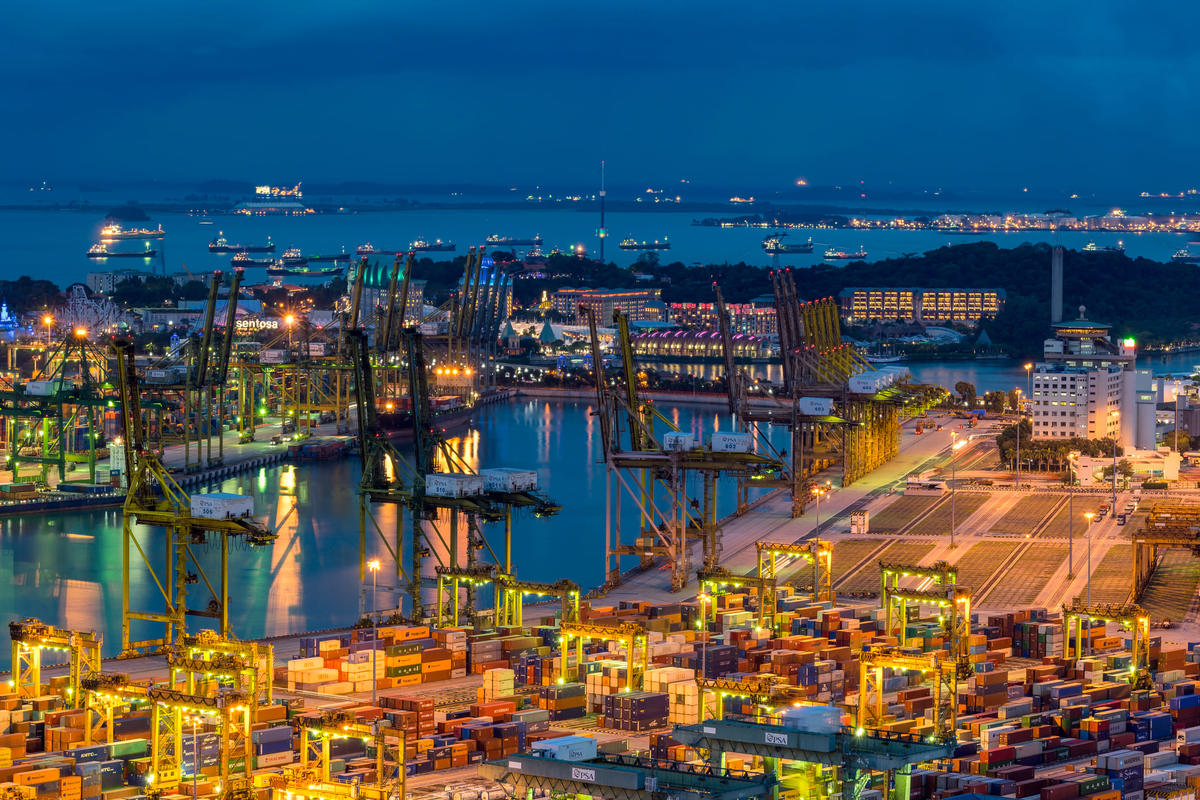IGU notes growth in global LNG bunker fleet
The global operational LNG bunkering-capable vessel fleet has grown significantly in 2024, reaching 56 units by December last year, the International Gas Union (IGU) reported in its 2025 World LNG report.
 IMAGE: Aerial view of Singapore container terminal. Getty Images
IMAGE: Aerial view of Singapore container terminal. Getty Images
The total number of LNG bunker vessels increased by nine from 2023, with a total added LNG bunker capacity of 82,900-cbm.
The global LNG bunker fleet increased substantially due to the support from rapidly growing infrastructure and evolving regulations like the International Maritime Organization’s (IMO) ban of oil-based marine fuels in the Arctic region and European Union’s (EU) FuelEU Maritime regulations.
IGU has reported that the highest number of operational LNG bunkering vessels are in Europe. This is followed by Asia Pacific and then North America, “both of which have seen rapid expansions in the past five years.”
Europe has the highest bunkering capacity, with a total of 190,757-cbm across 25 vessels currently in operation as of last year, IGU said. “Europe’s LNG bunkering sector has experienced significant growth, marked by increased infrastructure development and a surge in LNG-fuelled vessel orders,” it added in the report.
Asia Pacific has the second-highest bunkering capacity, with a total of 179,700-cbm across 17 vessels in operation. China has five operational LNG bunkering vessels providing STS bunkering services. South Korea has four bunkering vessels, and Singapore follows with three bunkering vessels in operation.
The US also became a significant LNG bunkering hub in 2024, reaching a total capacity of 86,400-cbm across 10 operational vessels by December.
“2024 was a significant year for LNG bunkering,” the union said. “Bunker users were quick to capture the reductions in both fuel costs and carbon emissions from using LNG, taking advantage of lower LNG prices relative to other marine fuels in 2024,” it added.
The Port of Singapore recorded 463,900 mt of LNG bunkered last year, about four times more than the 110,900 mt bunkered in 2023. The Port of Rotterdam recorded a 52% increase in LNG bunkering, from 620,000-cbm in 2023 to 941,366-cbm in 2024, according to the report.
Lower prices and an emerging LNG-fueled fleet “were catalysts” in the large uptake in LNG bunker volumes, IGU said. It further identified the Middle Eastern region as a potential emerging LNG bunkering hub.
“This [Middle East] area is identified as a potential new LNG bunkering hub with Oman, the UAE, and Qatar as the main bunkering locations,” it said.
By Aparupa Mazumder
Please get in touch with comments or additional info to news@engine.online





